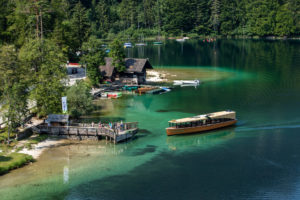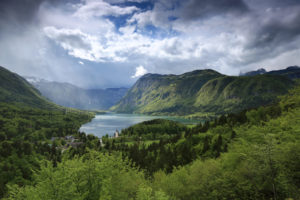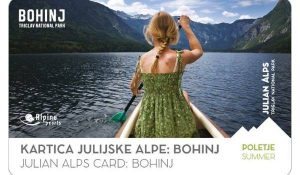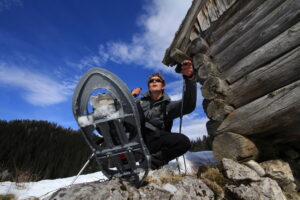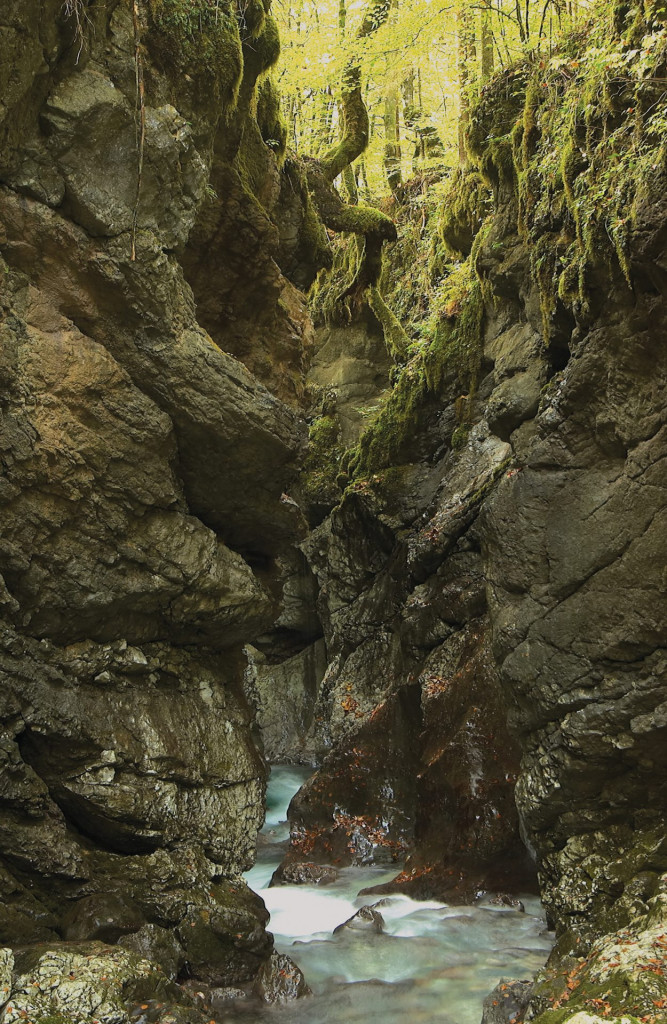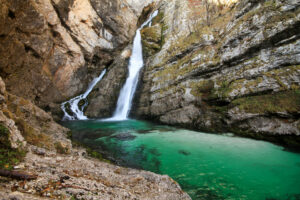Mostnica Gorge and the Voje Valley are among the most beautiful and most visited natural attractions in Bohinj. On the way through the Gorge, you can admire the crystal-clear water and the boldly reshaped rocks, and enjoy the rich flora, fauna and cultural landscape that has been nurtured by the local people over the centuries. In autumn, the path leads you among the cows and their tinkling bells to the waterfall where the Voje Valley ends.
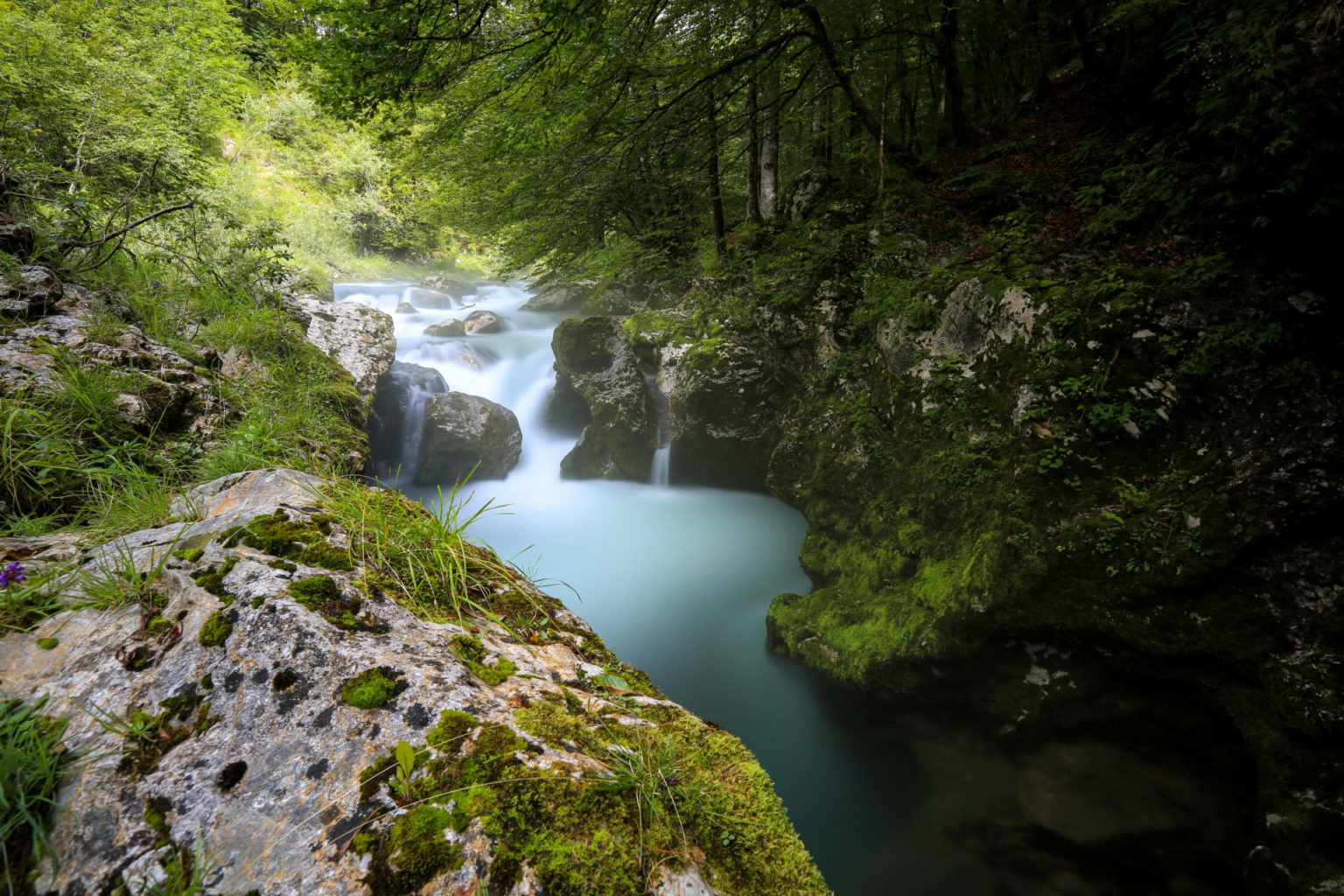
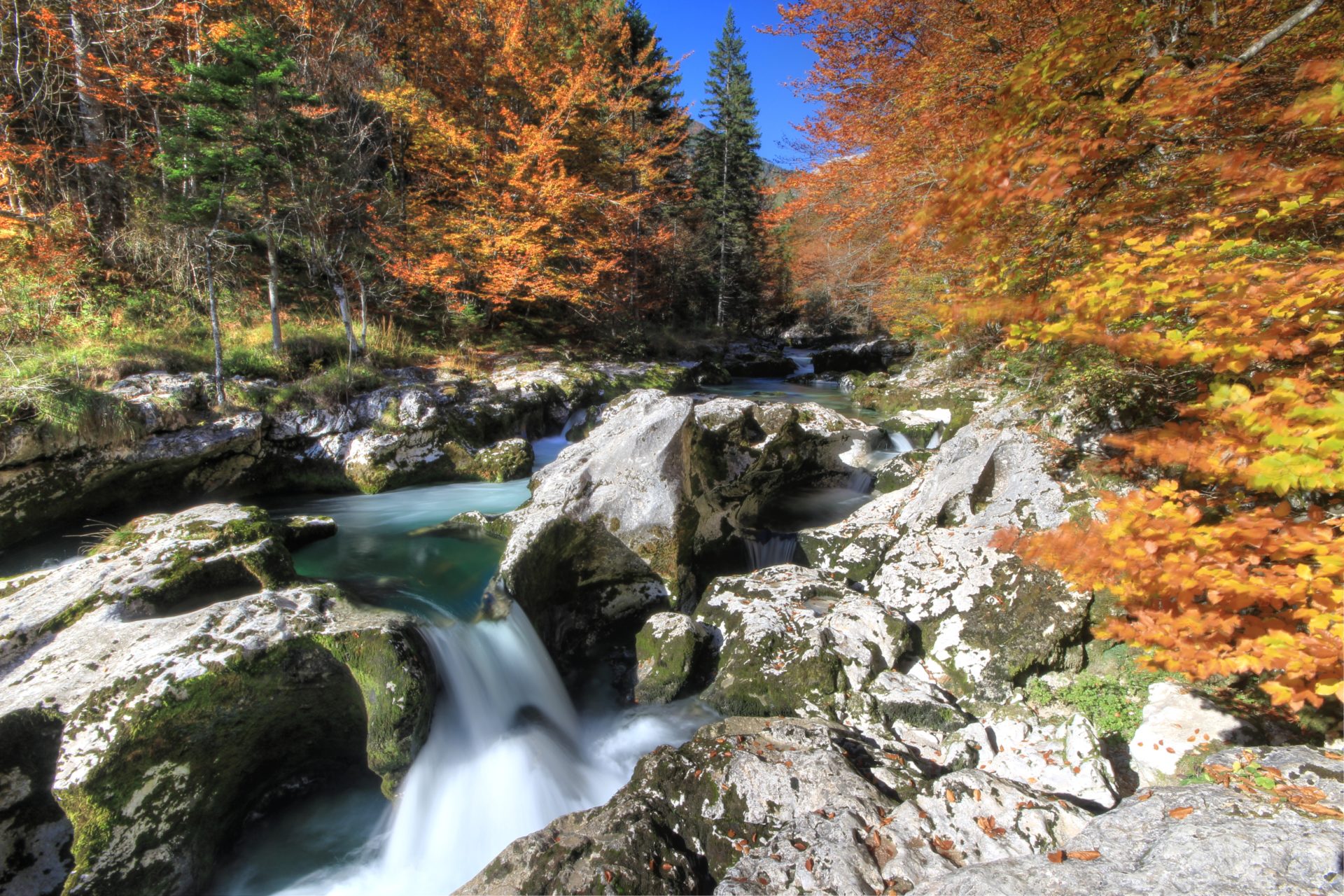
The Mostnica is an alpine river with rapids and waterfalls, offering an interesting display of nature’s creativity through the Voje Valley and all the way to Stara Fužina. Explore the wonderful world at your fingertips and enjoy a walk in the beautiful forest, accompanied by birdsong and the babbling of a mountain river.
Entrance fee for the Mostnica Gorge
Entrance fee – Individual guests
15. 4. – 31. 5. and 1. 10. – 10. 11.
1. 6. – 30. 9.
Payment is exempt for:
- pre-school children up to and including 6 years (not valid for groups)
- Julian Alps: Bohinj card holders
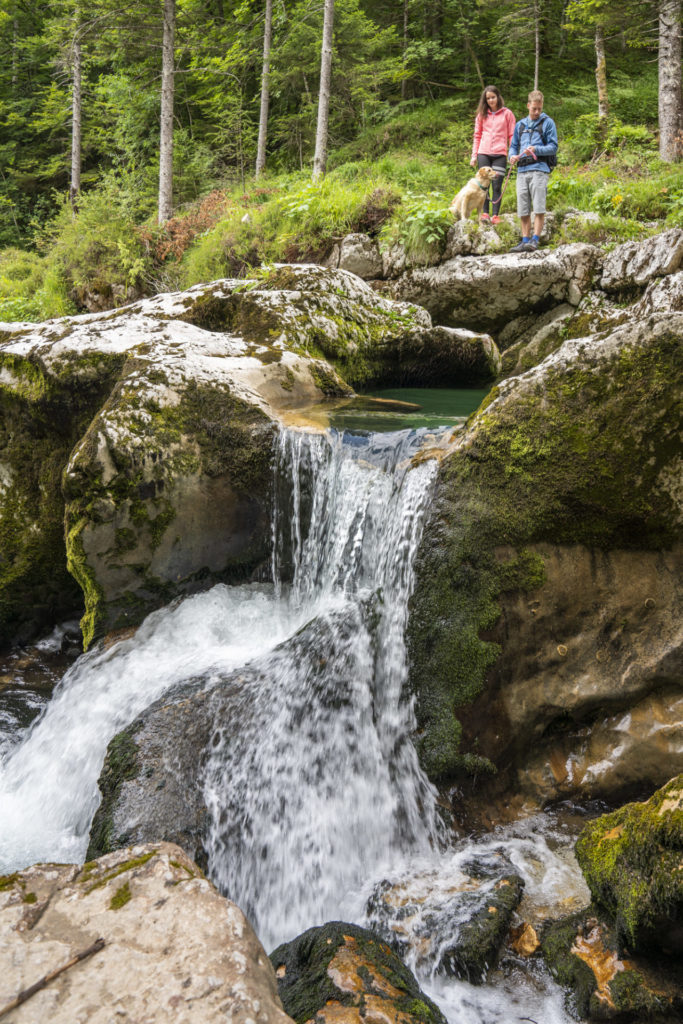
Entrance fee – groups
Payment can only be made in cash or by purchase order (for groups).
Clarifications:
- the group rate is granted to groups of 20 or more people
- every 21. person the is free of charge
- accident insurance is included in the entrance fee
- We reserve the right to change package without prior notice
- Discount is granted only with suitable identification.
- Group booking and information: [email protected]
Devil's Bridge
Just above Zois Manor, the stone, single-arch Devil’s Bridge spans over deep flumes high above the Mostnica river. It offers a dizzying view into the narrow troughs carved out of the limestone bedrock by the Mostnica river. The stone bridge shortened and simplified the transport of iron ore and wood charcoal from the surrounding mountainous areas to the smelters below on the Mostnica river. Bohinj was the most important centre of mining, iron and steel production in the Julian Alps. Due to its iron ore deposits, it was continuously inhabited as early as the Iron Age (8th century BC).
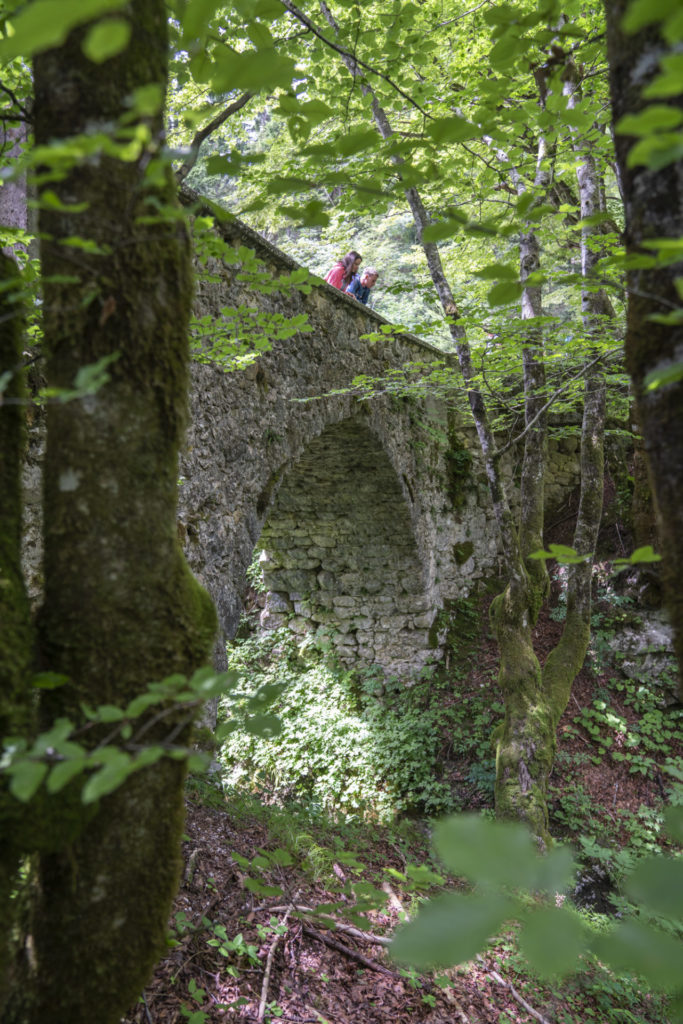
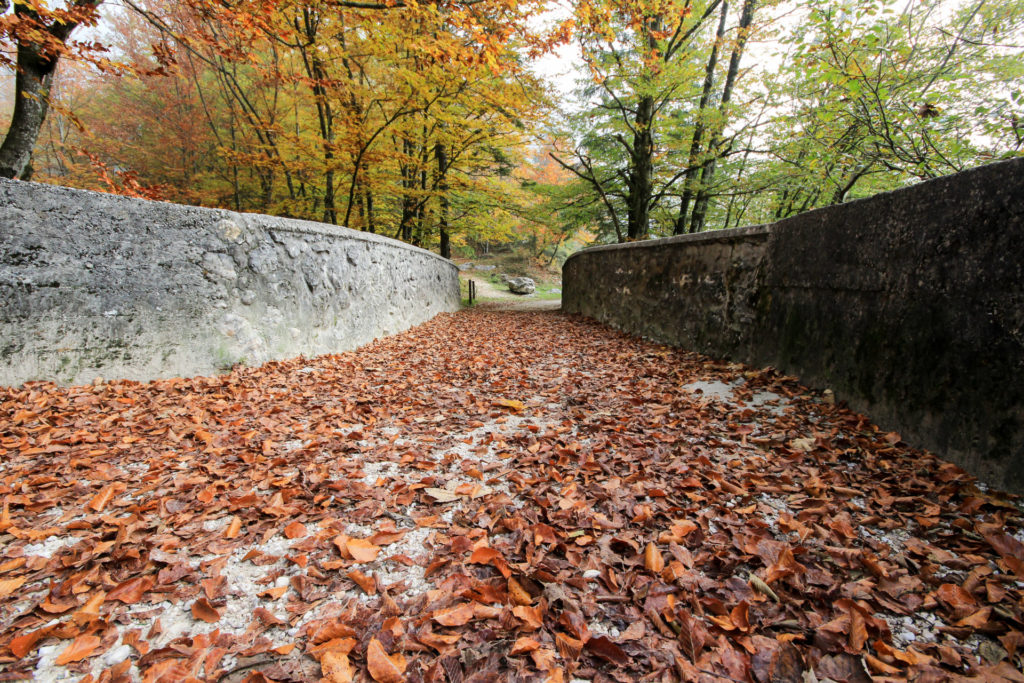
A folk tale about the Devil's Bridge:
People used to talk about how the Devil’s Bridge was made. The people worked all day but the next morning everything that had been built was demolished. And someone said: “Let the devil build this bridge, I will not build it anymore.” And then the devil really started making it. The people asked him what he wanted for his efforts. The devil answered: “The first soul that crosses the bridge – this is the one that I want.” In the evening, they wondered who this unfortunate person would be. A farmer who had a dog, got an idea. He said: “I will take a big bone and my dog with me.” T hen he threw the bone across the bridge and the dog ran after it. The devil then took the dog’s soul. He was very angry and started waving his tail, and so he demolished the entire fence.
Erosion potholes and the Elephant
The Mostnica Gorge was formed due to water erosion of the surface. Although the majority of the water runs into Voje from karst springs and is not turbid, there is still enough gravel and sand to erode and reshape the rock, especially when the water is high and the stream is faster and has more volume. The fast water flow is turbulent, and this is the most important erosion factor for the rocky river bed. Potholes are the most visible erosion forms in the Mostnica Gorge. These are various round basins in the river bed, which usually contain sand and small stones. The energy of the water swirls the stones around and widens as well as deepens the potholes. One opening in the rock between two water-carved potholes is very interesting, forming a natural window with a rocky arch resembling an elephant’s trunk.
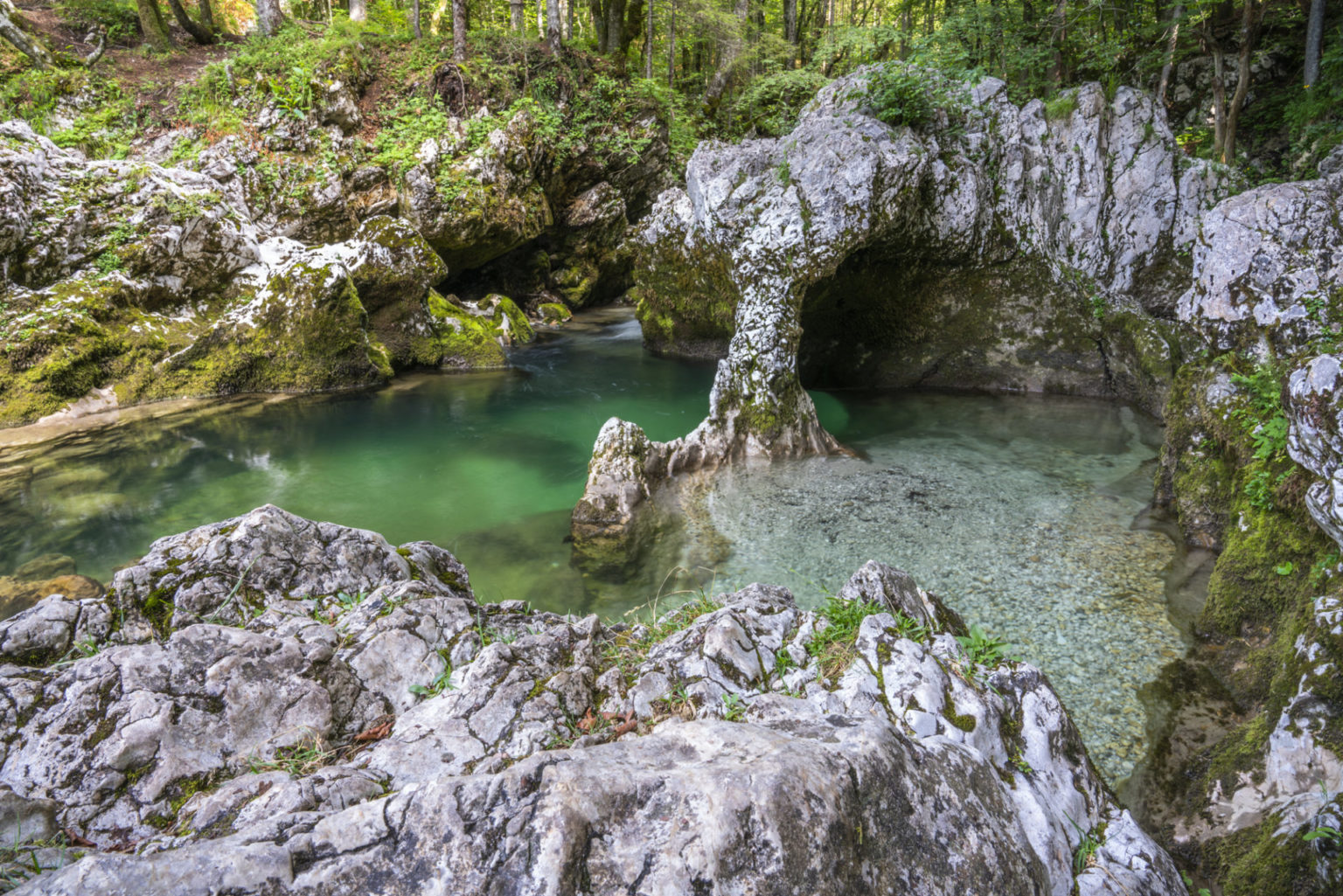
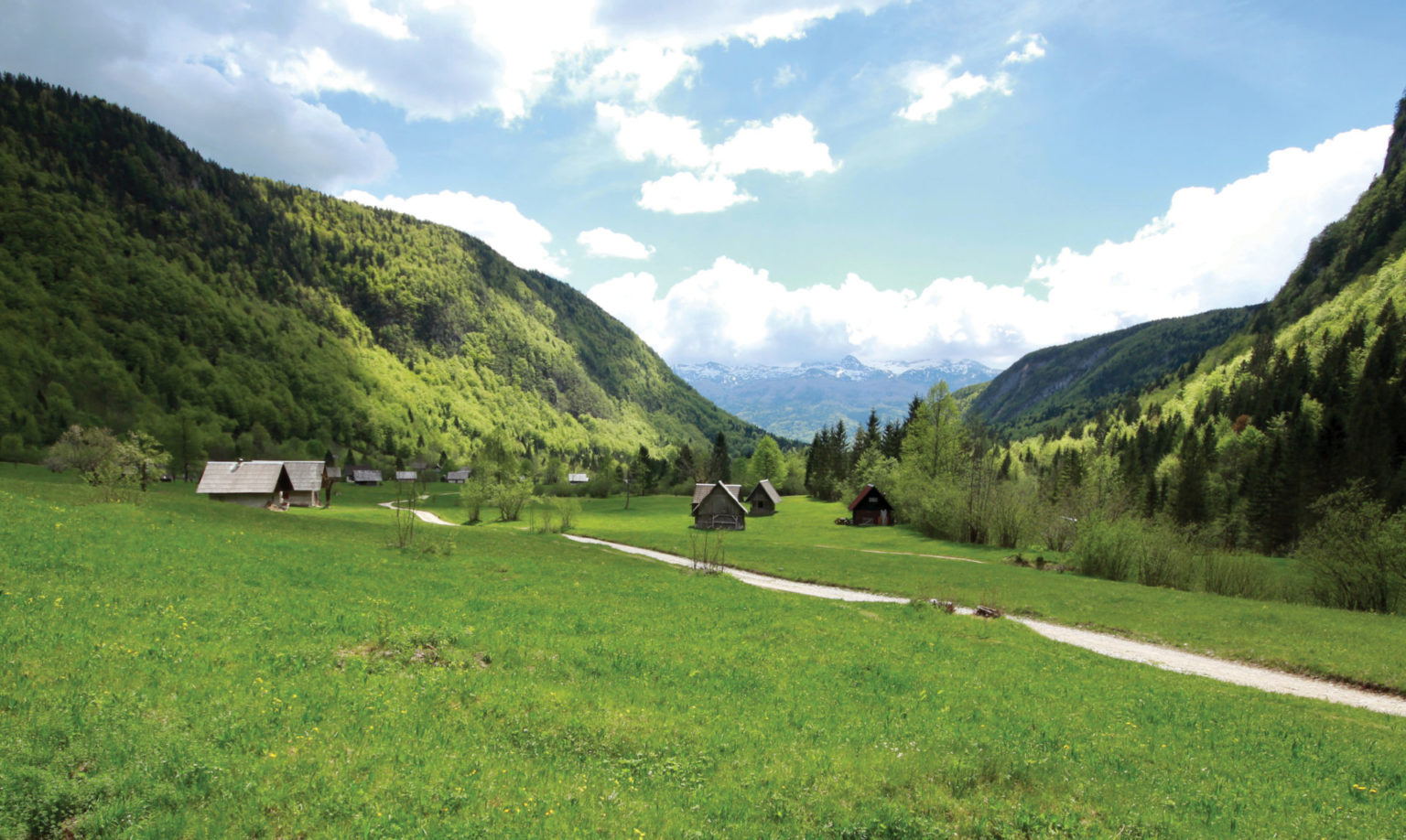
Voje Valley
The grassland of Planina Voje is the open middle part of the Mostnica Valley, at an altitude of just slightly over 700 metres. The surface is covered with ground glacial moraine, and towards the south the pasture is closed by the terminal moraine dam. It is rich in water and at individual sites, water springs out of the ground. Planina Voje is in a typical glacial valley in the shape of the letter U. The only pasture that has survived on the mountain is the autumn grazing, so cows can be seen on the mountain pasture during the autumn months. Four brave men from Bohinj were the first to climb Triglav from the Voje Valley (26 August 1778).
A walk through the Mostnice Gorge
Start your exploration from Stara Fužina (all routes are marked):
- from St Paul’s Church,
- from the centre of the village, past the Zois Mansion or
- from the car park at Vorenčkojca.
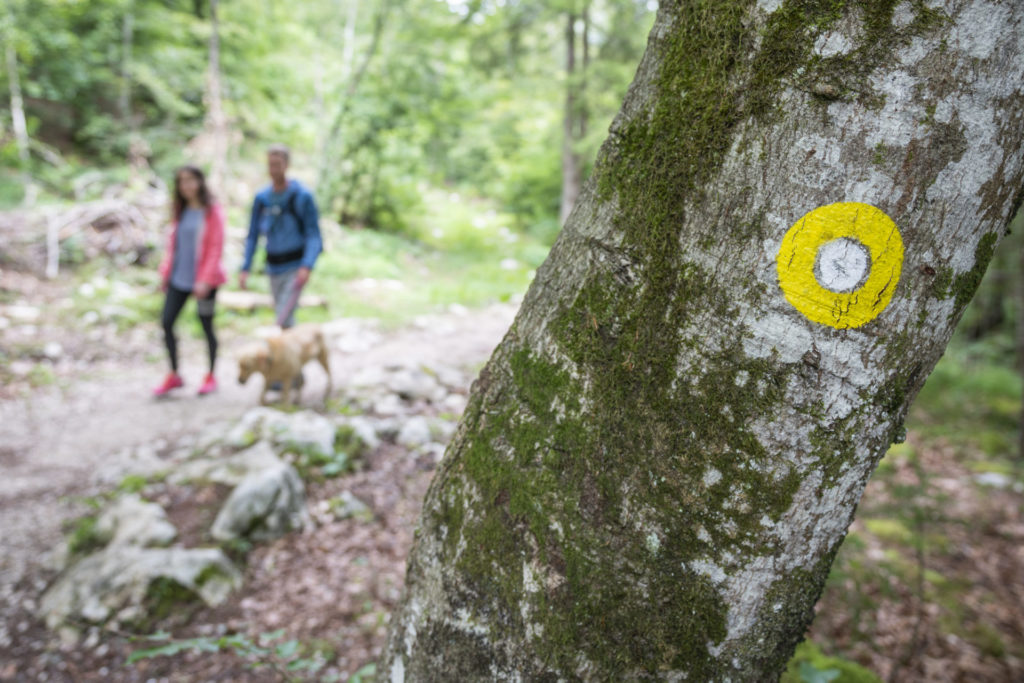
Additional information
-
to visit the Mostnica gorge (from the Devil’s Bridge to the exit near the mountain hut at Voje), you must pay an entrance fee
-
a footpath is provided on both sides of the gorge thus enabling a round trip.
-
caution is needed at the edges of the gorge, particularly in humid weather conditions.
-
we do not recommend an individual walk through the Gorge in case of snow.
-
you can also walk (or cycle) to the Voje Valley by road, where is no entrance fee (but in this case the trail does not go through the Mostnica gorge)
-
guided tours through the Mostnica gorge are organised on Tuesdays during the summer months (July and August)
Short version of the trip: trail through the gorge
Not far from the bridge is a trail-head that leads through a forest, where you can view the picturesque gorge. The gorge was made by the Mostnica river and in some places, it is very narrow. We can observe interesting creatures of nature along the trail, i.e. waterfalls, pools etc. A hollow rock which got the name “Little Elephant” is especially interesting, since it emerged when the water broke through a rock.
The path through the Mostnice Gorge ends with a short climb to Koča na Vojah, where you can enjoy delicious homemade meals and refreshments before continuing your exploration of the Voje Valley (or returning to Stara Fužina).
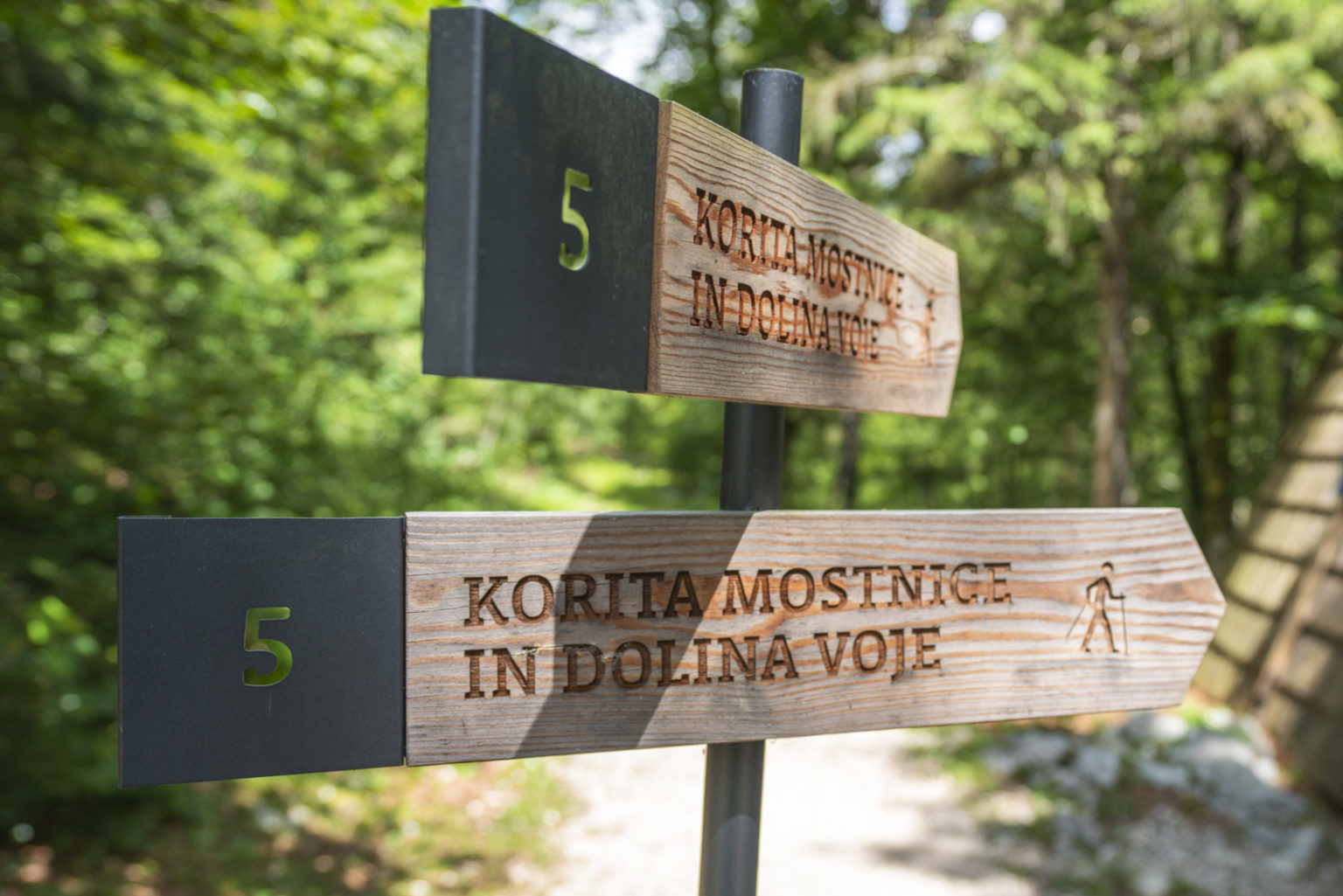
Longer version of the trip: to the end of the Voje Valley
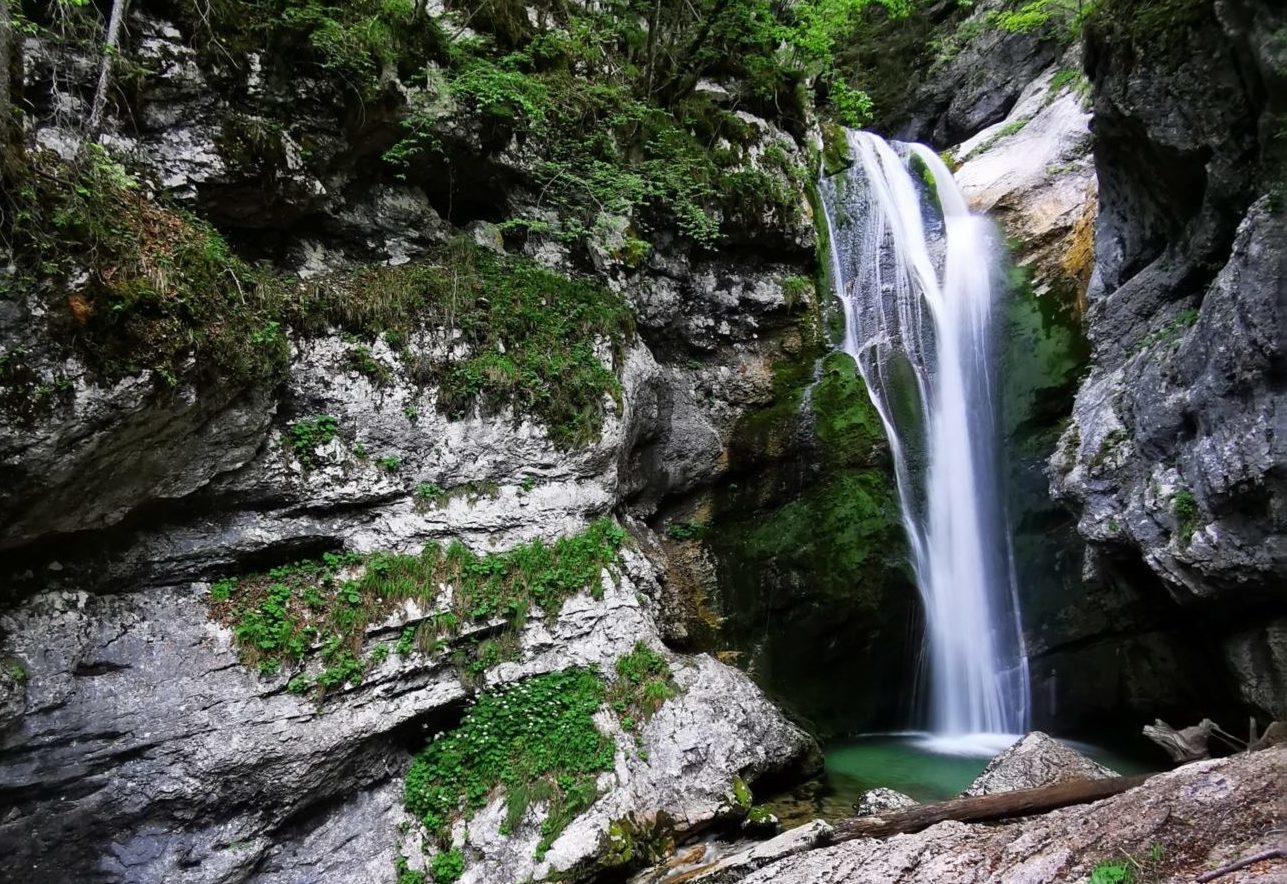
From the Koča na Vojah alpine hut you can continue through the picturesque valley of Voje to 21 m high Voje waterfall (also called the Šum waterfall or Mostnica waterfall). After visiting the waterfall we recommend you to stop at Voje Waterfall Alpine Hut, where you will be able to enjoy local food and drinks.
The tour to the end of the Voje Valley takes about two and a half hours in one direction. The trail is well marked and is easy to moderate. The most difficult parts of the trail are two five-minute ascents (the first from the Mostnica Gorge to the Voje Hut and the second one to the Mostnica waterfall at the end of the valley).
In order to fully enjoy in this experience, we recommend you to hire a guide who will describe and show all the natural features along the trail, present you the life in Voje Valley and also other interesting historical facts that relate to the explored area.
Mostnica Gorge brochure
SI
EN
DE
IT
The equipment in the Mostnica gorge
reflects the wood processing and iron foundry tradition in Bohinj. Fences are made of metal, the benches and tables are designed and made from wooden stocks and flat iron. The exterior of larch wood is processed and has a crack towards the internal part (“špranja”) and a natural edge. The crack was not formed by hand, and it represents the nature of the gorge and the crack in wood which is a feature of the gorge and the materials.
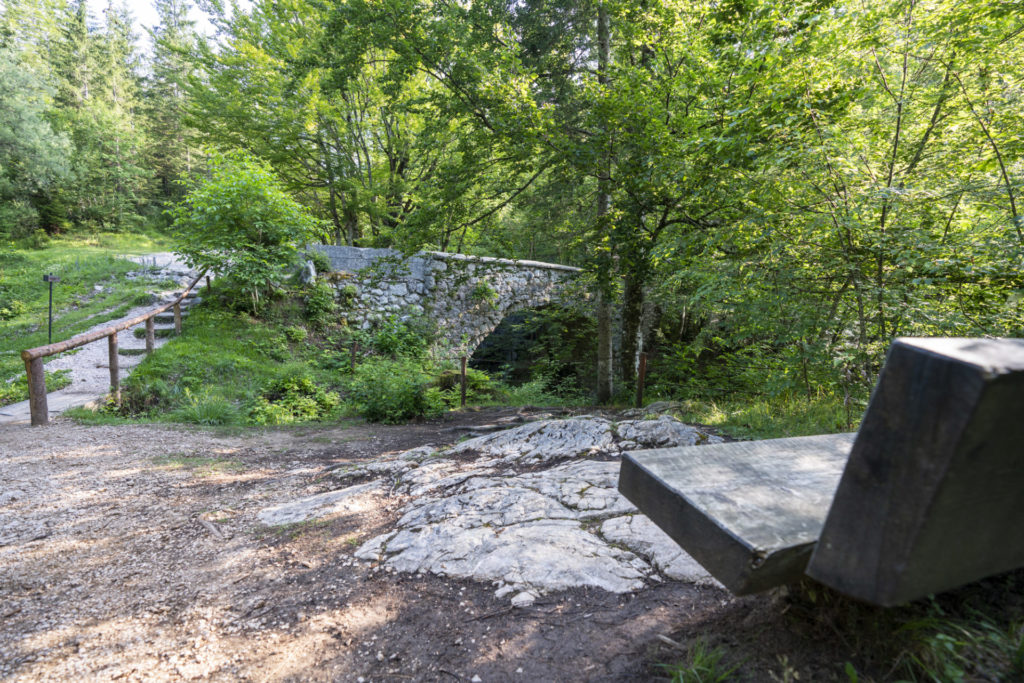
Rules of behaviour in the Triglav National Park:
- Respect the habits of the local people when visiting these
areas. - Admire the flowers, but do not pick them.
- Leave no waste behind.
- Dogs must be on a lead.
- Keep to the marked paths.
- The trail along the Mostnica Gorge from the Devil’s Bridge (Hudičev most) to the alpine hut in Voje is intended for hikers, so cycling is not permitted.
- Leave vehicles in properly marked car parks.
Related content
